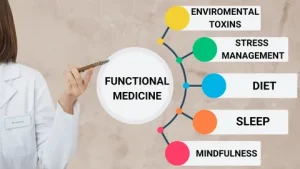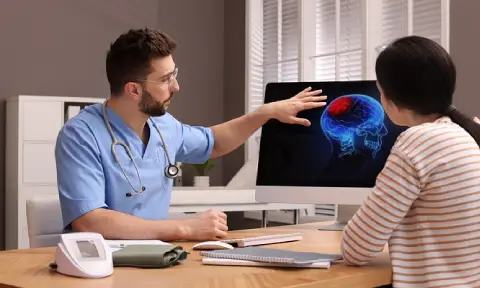
The Root Cause Revolution: How Functional Medicine Rewrites the Story of Autoimmune Disease
For decades, millions of people have lived under the weight of autoimmune diseases—conditions where the body turns against itself.

“You’ve had a severe concussion, multiple fractures, and a heart attack. Go home and rest.” That’s what Dr. John W. Jung was told after surviving a devastating car crash. No treatment plan. No follow-up instructions. Just silence—backed by a system that didn’t seem to know what to do next. But Dr. Jung wasn’t just another patient. He was a medical professional, a chiropractor, and a man who had spent his life studying the human body. And in that moment of doubt, something shifted. He realized the traditional medical model wasn’t enough. Waiting passively for healing to come wasn’t a solution—it was a risk. That realization became the foundation of his book, Alternative Treatments to TBI: What Should You Do for Brain Injury Recovery Immediately? A book not born from theory, but from survival.
This isn’t just a guidebook—it’s a mission statement. Dr. Jung’s story is not only central to the book, it’s what makes it so convincing. He writes with the authority of a doctor and the vulnerability of a patient. His experiences form the heart of the narrative, and his message is clear: the brain doesn’t recover through rest alone. It needs stimulation. It needs action. And it needs it now. In the aftermath of his injury, Dr. Jung was stunned by the lack of urgency in standard TBI protocols. The prevailing advice was to wait, observe symptoms, and hope they would fade. But as he puts it, that advice was not backed by science. His frustration with this passive approach pushed him to draw from decades of experience and research, creating a method that treats brain injury through immediate, natural interventions. And he made it his goal to share this with others who had been left with no answers.
His approach is grounded in a strong understanding of the brain’s architecture. He explains that the brain responds to sensory input—light, sound, movement, smell. These aren’t just perceptions. They are triggers. They activate specific regions of the brain and can help restart connections damaged by trauma. Through exercises like spinning in a chair, exposing one side of the body to vibration, listening to music through one ear, or stimulating one nostril with scent, patients can begin to re-engage neural pathways that conventional medicine leaves untouched. What makes these methods extraordinary is how simple they are. You don’t need expensive technology or specialized therapy centers. You need intention, knowledge, and a commitment to begin healing. Dr. Jung walks the reader through every step, making it possible for individuals and caregivers to apply these techniques at home.
Chiropractic care also plays a central role in his recovery model. Often misunderstood or dismissed by mainstream medicine, chiropractic treatment in Dr. Jung’s approach is not just about spinal adjustment. It’s about restoring the body’s communication pathways. A properly aligned spine supports clearer messages between the brain and the rest of the nervous system, enhancing the brain’s ability to adapt and repair itself. Dr. Jung immerses the reader into the concept of lateralized stimulation—stimulating one side of the body to activate the opposite hemisphere of the brain. This principle is supported by neuroscience but rarely applied in early-stage recovery. For instance, stimulating the left hand can awaken the right brain. Music played through the right ear affects the left hemisphere. Even introducing pleasant or unpleasant scents into specific nostrils can trigger responses in targeted brain regions. These details, while greatly scientific, are explained with remarkable clarity, ensuring that anyone—regardless of background—can follow and benefit.
But beyond the science, what connects most is the character of Dr. Jung himself. His journey from patient to healer is filled with moments of doubt, frustration, determination, and discovery. He never claims to have all the answers, but what he offers is something far more valuable—hope paired with action. His vulnerability is his strength. He doesn’t just tell readers what to do—he shows them what he did, what worked, and why it matters. This book is a wake-up call for anyone touched by traumatic brain injury—patients, caregivers, or healthcare professionals. It challenges the status quo and opens a door to alternatives that are too often ignored. It offers a roadmap for those who feel lost. And it delivers this with empathy, urgency, and evidence.
Dr. Jung never intended to become an “accidental author,” but his circumstances demanded a response. He could not sit back and watch others face the same helplessness he did. His decision to write this book came from a place of purpose—to make sure others didn’t have to manage their recovery in the dark. The main message of Alternative Treatments to TBI is empowerment. Readers are given tools, knowledge, and confidence to take control of their healing journey. They are reminded that the brain is adaptable and that even in the face of trauma, it can rebuild. Dr. Jung’s methods are a call to stop waiting and start doing—to reject the idea that healing must come slowly or only through conventional routes. This isn’t just what your doctor might not tell you. It’s what you absolutely need to hear.

For decades, millions of people have lived under the weight of autoimmune diseases—conditions where the body turns against itself.

The human brain is one of the most extraordinary organs in existence—capable of adapting, learning, and healing itself in ways that science is only beginning to understand.
Sign up for Dr. John W. Jung’s newsletter and receive exclusive content on brain injury recovery, alternative treatments, and cutting-edge research. By subscribing, you’ll get expert tips on improving brain health, updates on new therapies and research findings, special offers, upcoming events, and exclusive excerpts and bonus content from Dr. Jung’s work.
Don’t miss out—join our community today!